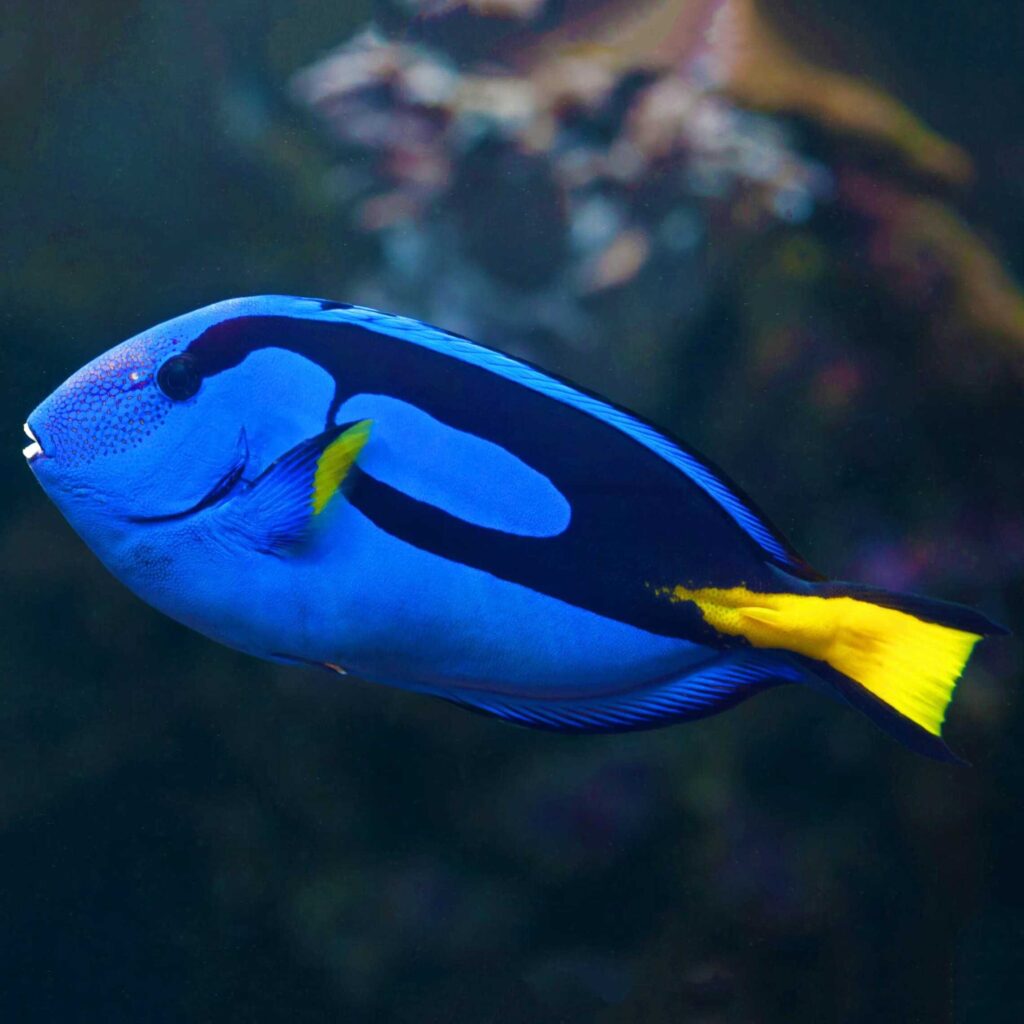
Discover how to care for Blue Tangs like Dory with this friendly, detailed guide. Learn about tank size, setup, diet, tank mates, behavior, and thriving tips for your marine community.
Every time I see a Blue Tang swim through the reef tank, I feel transported into the vibrant world of Finding Nemo. Their electric blue body and painter’s palette pattern are simply stunning. But keeping one isn’t just about looks—it’s like caring for a tiny, active athlete that needs space, precision, and compassion to keep shining.
Quick answer: Blue Tangs are beautiful reef fish that need large, stable tanks, strong filtration, a plant-based diet, and handling with care to thrive.
Understanding the Blue Tang
Scientific Name, Size & Lifespan
The Blue Tang—scientifically Paracanthurus hepatus—can grow up to 12 inches (30 cm). In well-maintained environments, they can live 20–30 years, with some even outliving cats and dogs!
Quick answer: Blue Tangs can reach about 12 inches and live up to 30 years with the right care.
Tank Setup Essentials
Tank Size & Shape
Blue Tangs are active swimmers that need freedom to roam. Ideally, keep them in tanks of 180 gallons (700 L) or more, typically at least 6 feet long. Juveniles under 5 inches may start in 75 gallons, but must be upgraded as they grow.
Quick answer: Begin with at least 75 gallons for juveniles, but plan for a 180-gallon tank as they mature.
Water Conditions & Filtration
Maintain stable reef-quality water:
-
Temperature: 75–82°F (24–28°C)
-
pH: 8.1–8.4
-
Salinity: 1.020–1.025 specific gravity
-
Ammonia/Nitrite: 0 ppm; Nitrate: <20 ppm
Use a protein skimmer, strong filtration, and wavemakers for healthy water flow and cleanliness.
Quick answer: Keep reef-quality water with strong filtration, a skimmer, and good water circulation to support Blue Tang health.
Aquascaping & Decor
Offer a mix of open swimming room with live rock formations for grazing and hiding. Tangs love to dart through rock crevices but need space to escape stress.
Quick answer: Use live rock for grazing and hiding while leaving plenty of open space for your Blue Tang to swim.
Feeding & Nutrition
Dietary Needs
Blue Tangs are primarily herbivores. Their diet should include:
-
Marine algae and nori sheets
-
Vegetable-based flakes and pellets
-
Occasional meaty treats like mysis or brine shrimp
Feed multiple small meals per day to replicate natural grazing habits. A strong, algae-rich diet also helps prevent HLLE (head and lateral line erosion).
Quick answer: Offer varied, algae-rich foods and small daily meals to keep Blue Tangs healthy and prevent HLLE.
Tank Mates & Behavior
Temperament & Companionship
Blue Tangs are generally peaceful, but territorial with their own species. If you plan to keep multiple, introduce them together and ensure there’s plenty of space—ideally in tanks nearing 400 gallons for harmony.
Safe Tank Mates
They can live well with peaceful reef-friendly species like clownfish, angelfish, wrasses, and chromis. Avoid overly aggressive species or overcrowding.
Quick answer: Blue Tangs do best with peaceful reef mates—only keep more than one if you have ample space and introduce them together.
Health Concerns & Best Practices
Common Issues
Watch out for:
-
Ich and marine velvet
-
HLLE from poor diet or stress
Prevent problems with quarantine, pristine conditions, stress reduction, and balanced nutrition.
Quick answer: Prevent common issues like ich and HLLE with quarantine, clean water, and proper feeding habits.
Breeding & Lifespan Insights
Breeding Blue Tangs in home aquariums is extremely rare. In the wild, they spawn year-round, with males and females racing upward during mating.
Their potential longevity—up to 30 years—makes them a long-term commitment.
Quick answer: Blue Tangs aren’t typically bred in captivity; they can live three decades, so be ready for a long-term companion.
Common Questions (FAQ)
How big do Blue Tangs get?
They can grow up to 12 inches (30 cm).
What size tank do they require?
Start at 75 gallons for juveniles, but plan for a 180-gallon tank (6 ft long) as they mature.
How often should I feed them?
Feed small portions multiple times per day, with a mix of algae and herbivore-friendly foods.
Are they reef safe?
Yes, they are generally reef safe but need algae-rich diets to avoid coral nibbling.
Conclusion – Is a Blue Tang Worth It?
Caring for a Blue Tang is like adopting a small, graceful, long-lived marine dancer. It takes space, care, and a little dedication—but the reward is extraordinary: a living splash of color, motion, and wonder.
If you’re ready for the leap, give them room to roam, vibrant greenery to graze, and a tank that feels like home. Soon, they’ll transform your aquarium—and your heart.
